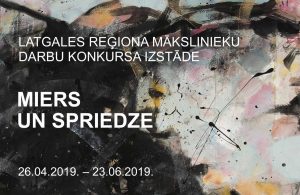Peace and tension – the two antitheses of the 21st century. These terms or elements of life accompany us all in our day-to-day routines. Each of us can perceive and make sense of these two phenomena in a different way. A worker’s existential life is hinged on peace, which allows an individual as well as their family, relatives, friends or acquaintances to engage in human interaction. Based on peaceful, harmonised and, at the same time, dynamic development, it promotes their individual growth.
These labels are conditional because the antithesis of peace is tension, anxiety and concern for oneself and others. The two notions are increasingly dissonant in our personalities and in the different situations or circumstances that we find ourselves in. In this century, we should learn to live with both these states of human existence, which seem inherently different.
Peace is stability, prosperity, occasionally even bourgeois self-promotion. This interpretation underscores that peace is matter-of-fact and that its absence would undermine our very existence, let alone anything approaching harmonised development.
Meanwhile, tension, though not among the most positive aspects of human life, is something more than that. It is a dynamically exciting and stimulating factor. It affects a worker at their chosen setting – at work, in everyday life and during social interaction. Creators also have a driving force that pushes them to seek new challenges and opportunities with a view to demonstrating their creative outputs to the public through the prism of development and growth. Tension can be described as a distraction. Yet, at the same time, it drives you, keeps you on your toes and helps you form harmonised relationships with others, provided you do not regard the two notions as dangerous or mutually exclusive.
In fact, peace is the anchor of our daily life, while tension is the driving force that prevents it from becoming routine or stagnant, the engine that “switches us on and off” in any given situation.
Peace and tension can be local or regional, or even international, but, for the most part, we feel them in our immediate surroundings, in places we live and work. Among the people of Latgale, peace and tension are not much different from how these concepts are interpreted elsewhere in Latvia. However, each village, parish, county or region has and should have a particular understanding of these concepts, which would set them apart as specific to Latgale, Vidzeme, Kurzeme, Zemgale and Rīga. Tension and stress in the capital certainly involve more care and reflection on what is, was or will be done or achieved, while the stream of daily tensions in Latgale is much calmer and broader.
At the moment, as well as in the nearest future, our task is, on the one hand, to harmonise these concepts and make them work together to become a driving force in dissonance. Certainly, in a positive view, peace and tension should help build our daily routines, concerns, work and relationships on the solid ground of respect and responsibility, thereby making us fully engaged members of a given society.
Peace nourishes, anxiety destroys, but they are both united by tension – the potential of development and evolution to build and develop ourselves so that our daily lives contribute to our growth and prosperity.
Representatives of creative professions in Latgale – ceramicists, painters, graphic artists, photographers – have so far convincingly shown that their performance is harmonious and appropriate rather than dependent and disruptive. No doubt, everybody imagines and conceives the year 2019 very differently from the peace and tension of the previous year, also the previous decades. By combining our understanding of the capacity of both phenomena to be mutually complementary and harmonised, we try to shape and show ourselves on a better and higher level. Is Latgale able to offer a different view of peace and tension in various forms of art? Absolutely, because there can be no unified view of peace, for which tension must serve as collateral. It is dynamic growth and positive progress.
Aivis Freidenfelds
Participants of PEACE AND TENSION: Juried Group Exhibition by Artists from Latgale Region: Agra Ritiņa, Aidens Redmeins, Aiva Žūriņa, Aivars Baranovskis, Aivars Bulis, Aivis Pīzelis, Aleksejs Smirnovs, Alīna Petkūne, Allen Esp, Anastasija Bikova, Anastasija Dubovska, Anatolijs Kivrins, Andrejs Gorgocs, Andris Ungurs, Anita Jurkeviča, Anita Nikuļceva, Anna Pustovoitova, Anna Ruža, Annele Slišāne, Arta Lindmane, Dace Abricka, Dāvis Ieviņš, Diāna Apele, Edgars Vronskis, Egons Kivkucāns, Evita Lukaševiča, Ēriks Volonts, Gundega Strautmane, Ilgvars Zalāns, Ilona Linarte-Ruža, Dace Pudāne, Ilze Fetjko, Ilze Griezāne, Imants Haņeckis, Imants Suveizda, Ināra Petruseviča, Inese Lukjanska, Inga Pērkons, Ingūna Levša, Ivo Folkmanis, Johanna Gedroica, Jolanta Ābele, Jolanta Jonikāne, Jurijs Berdnikovs, Ksenija Shinkovskaya, Lilija Zeiļa, Līga Lupiķe, Līga Mergina, Ludvigs Bērziņš, Maija Bērziņa, Maija Šuļga, Mairita Folkmane, Mētra Štelmahere, Mihails Lavrenovs, Nataļja Marinoha, Natalja Krjukova, Nellija Dzalba, Oksana Vronska, Olga Rimkus, Pauls Pudžs, Pāvels Ostapcevs, Ruta Štelmahere, Rūta Dimdiņa, Sanda Mālniece, Sanri, Santa Miezīte, Santa Suhanova, Sintija Šadurska, Svetlana Pokule, Uldis Čamans, Una Gura, Valija Platace, Vēsma Ušpele, Vija Stupāne, Viktorija Grappa, Viktorija Valujeva, Žanna Vērdiņa.



